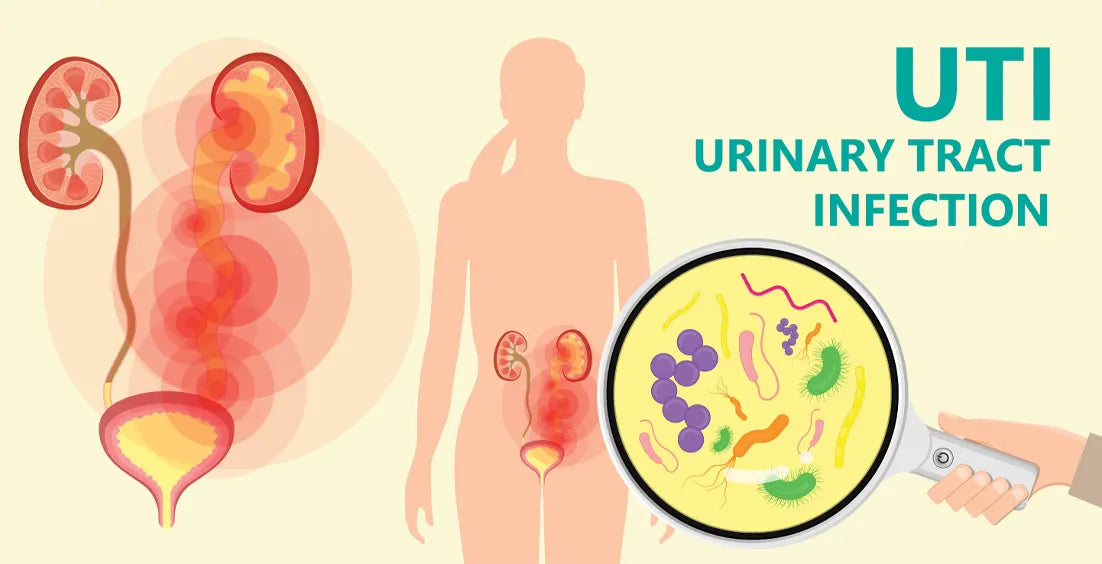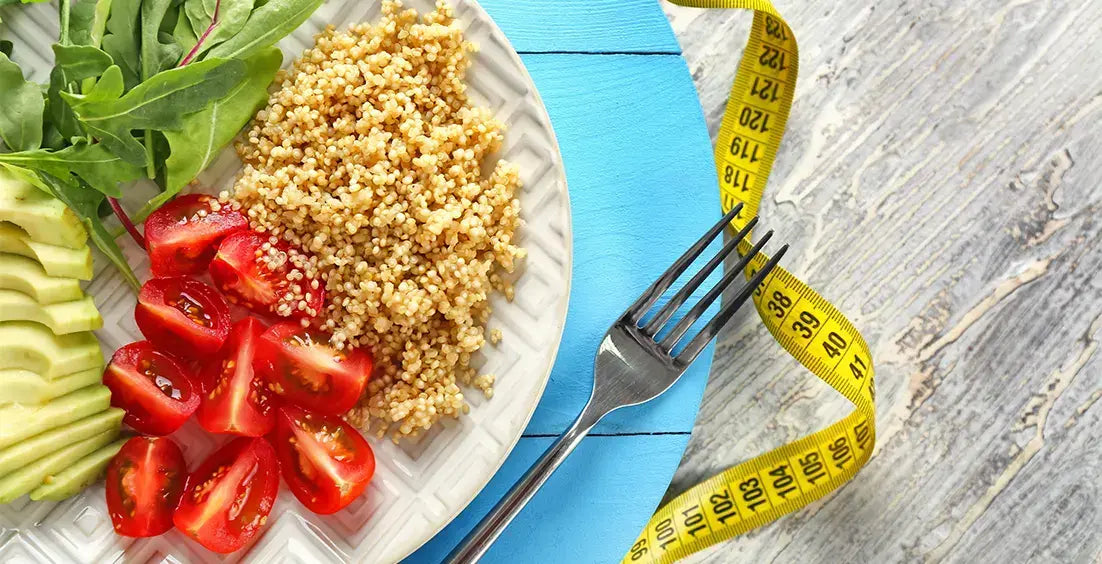How Much D-Mannose Should You Consume For UTI?
D-Mannose helps prevent E. coli bacteria from adhering to the walls of the urinary tract, which may aid in preventing and managing UTIs by promoting their elimination through urine.

Table of contents
Any person who has ever had a urinary tract infection (UTI) has an idea of how scratchy it is. UTIs can be referred to as coming with some discomfort and can often be challenging to manage in some cases.
The UTI issue has been topical with many people, particularly females. Thus, doctors may have to administer many doses of the anti-bacteria to clear the infection from the system.
What Is D-Mannose?
Natural occurring D-mannose is a fructose. It is a carbohydrate found in small concentrations in fruits and vegetables such as cranberries, cabbage, and tomatoes.
It is also manufactured in the body from glucose, sugar is again a term used when referring to glucose. Further, this molecule is also known as mannose.
D-mannose can also be given in a capsule or as a powder that is taken as an addition to the diet. The supplement is a white crystalline powder that is dissolved in water or unsweetened fruit juice.
How Long Does It Take For D-Mannose To Cure UTI?
Studies from the National Library of Medicine confirm that UTI symptoms were greatly improved after administration of 1. 5 grams of D-mannose every 12 hours, for three doses during the first 3 days and then one dose every 24 hours for a total of 10 doses.
Take the night doses with equal seriousness as with the day dosing and do not forget to set an alarm.
Subsequently, the frequency should be decreased to once every day in the next few days as symptoms subside.
Decrease the dose to 2g daily once symptoms have resolved to an interval.
If the infection has spread to the kidneys (possibly with signs of lower back pain, nausea, or high fever), then consult your doctor.
Dos and Don'ts of Using D-Mannose for UTI Prevention
- Wear breathable, cotton underwear.
- You should wipe in a forward manner especially after using the washroom or after urinating.
- Do not retain it when you have to pee; you must not keep it within you when you need to defecate.
- It is recommended for one to take about 6-8 glasses of water in a day.
- Reduce your intake of refined sugars and any products made with soda.
- Always ensure that you drain your urinary bladder each time you urinate to the very last drop.
- It is recommended that one should urinate as soon as he/she feels the urge to do so.
- Drink unsweetened cranberry juice or take cranberry supplements if you are a recurrent UTI sufferer.
- Do not take a bath in bubbles or wash the genital area encased in soap.
- Clean your genital area daily, make sure to wash off all the soap with clean water.
Precautions for Using D-Mannose
 D-Mannose
D-Mannose
The human body eliminates D-mannose through the urinary system; thus, there appears a risk of kidney injury or dysfunction after a high dose of D-mannose ingestion.
Regarding purity, caution should be taken in consuming D-mannose because it has the capability of altering the blood sugar levels of diabetic patients.
Pregnant women should also have insufficient information regarding the effects of the supplement on the fetus and the breast milk. It also stated that children should not take the product and that the product contained D-mannose.
It is dangerous not to follow the advice and treat a UTI using D-mannose or in some way rejecting and delaying standard treatment, since untreated UTI can cause such complications as a kidney infection and even kidney damage.
How Effective Is D-Mannose For Urinary Tract Infections?
The benefits of D-Mannose for UTI is considered to be very effective. Many people today >recommend D-mannose for the treatment and prevention of UTIs, especially those that originate from E.coli. It operates by binding to the surface of the E. coli bacteria making them unable to adhere to the lining of the urinary tract and thus can be washed out by urine.
Lisa Lehtoranta, Health & Biosciences has confirmed that supplements of D-Mannose can help minimize the chances of UTI infection in people with recurrent feelings. D-mannose has been proven in a study to be as effective as antibiotics in managing recurrent UTIs.
 Effectiveness of D-Mannose for UTIs
Effectiveness of D-Mannose for UTIs
Expert Advice on D-Mannose for UTI Treatment
Lubna Nazarani, Certified Nutrition Specialist
Lubna Nazarani, a Certified Nutrition Specialist and Certified GAPS Practitioner, highlights the effectiveness of D-Mannose in treating UTIs. She emphasizes that D-Mannose provides a safer and often equally effective alternative to traditional antibiotic treatments for managing UTIs.
Unlike antibiotics, which can disrupt the gut microbiome and contribute to antibiotic resistance, D-Mannose specifically targets E. coli bacteria without harming beneficial gut bacteria.
This targeted approach makes D-Mannose a more selective and safer option for long-term UTI management, reducing the risk of recurrent infections while supporting overall gut health.
Conclusion
D-mannose is one of the revealing natural treatments for UTI, primarily those produced by E. coli bacteria. This simple sugar acts in a way that hinders bacteria from sticking themselves to the walls lining the urinary tract so that they are washed out of the system.
Research has indicated that the intake of 5 grams of D-mannose every 12 hours during the first 3 days and then a lesser amount seems to have a great impact on the symptoms of a UTI.
This means that regular supplements are as powerful as antibiotics in UTI reoccurrence, meaning that D-mannose supplements would be of importance to people who are not interested in a typical treatment.
Nevertheless, as for any supplement, D-mannose is safe but should be taken according to the instructions or with the permission of a doctor if a person has any chronic disease like diabetes or kidney problems.
The consumption of D-mannose should be avoided by pregnant women and children since its effects on these categories of people are unknown. Intake in large amounts can result in unpleasant sensations in the gastrointestinal tract, and also increase the load on the kidneys.
Hence, to avoid any harm and for the proper usage of D-mannose for the treatment of UTIs, one must always wear recommended quantities and consult a healthcare provider.
FAQs
About WOWMD Staff
The WOWMD Staff category features a diverse team of writers, each bringing specialized knowledge in areas such as nutrition, fitness, wellness, and more. Articles in this category benefit from insights provided by multiple experts. All content is peer-reviewed and regularly updated to ensure compliance with our editorial standards.
References
- Studies from the National Library of Medicine confirm that UTI symptoms were great https://www.ncbi.nlm.nih.gov/pmc/articles/PMC8944421/#
- Lisa Lehtoranta, Health & Biosciences has confirmed that supplements of D-Mannose https://nutritionj.biomedcentral.com/articles/10.1186/s12937-022-00769-x
- D-mannose has been proven in a study to be as effective as antibiotics in managing recurrent UTIs https://www.ncbi.nlm.nih.gov/pmc/articles/PMC8066587/
- Research has indicated that the intake of 5 grams of D-mannose every 12 hours during the first 3 days https://www.europeanreview.org/wp/wp-content/uploads/2920-2925-D-mannose-a-promising-support-for-acute-urinary-tract-infections-in-women.-A-pilot-study.pdf
Evidence Based Research
This WOWMD content has been reviewed, as well as checked for facts, so as to guarantee the best possible accuracy.
We follow a strict editorial policy, especially related to the sources we use. Our articles are resourced from reputable online pages, with research drawn from academic institutions and peer-reviewed studies. You can click on the numbers in the parentheses (1, 2, etc.) and check out those references.
The feedback form on this page can be used to report content that is not accurate, up-to-date or questionable in any manner.
We do NOT intend for the information presented through our articles to replace the medical relationship with a qualified physician, nor does it represent specialized advice.


 Skin Detoxification Bundle
Skin Detoxification Bundle Complete Weight Loss Bundle
Complete Weight Loss Bundle Heart Care Bundle
Heart Care Bundle Better Immunity Bundle
Better Immunity Bundle  Men's Immunity & Prostate Health Bundle
Men's Immunity & Prostate Health Bundle Stress + Energy + Wellness Combo
Stress + Energy + Wellness Combo  Energy Booster Combo
Energy Booster Combo Natural Skin Care Bundle
Natural Skin Care Bundle Workout Supplements Combo
Workout Supplements Combo Cognitive Health & Vision Combo
Cognitive Health & Vision Combo Joint Health Support Combo
Joint Health Support Combo

















 By WOWMD Staff
By WOWMD Staff
